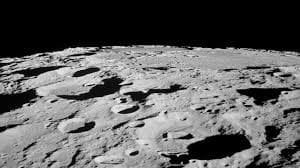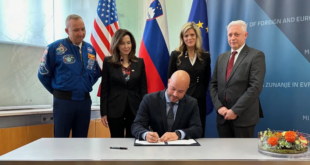by Daniel Porras*

Last week, NASA Administrator Jim Bridenstein announced a solicitation for proposals for the collection of lunar regolith by private companies.
This surprising announcement is yet another part of NASA’s efforts to return to the Moon (with the first woman and next man) and establish a sustained presence on Earth’s closest celestial neighbor.
While always causing a stir, some of NASA’s recent initiatives have also caused controversy, with some in the international community seeing unilateral actions by the U.S. as being over-reaching. In particular, the international community sees U.S. moves to launch mining activities on the Moon as premature because, first, there is no consensus (yet) that such mining is legal and, secondly, there isn’t an international regulatory framework to ensure the interests of all States.
The U.S. has tried a number of unilateral approaches in recent months, including the Artemis Accords and an executive order that somehow denies that space is a global commons. The results and reactions to these are mixed, to say the least. This latest initiative, however, might be more effective in warming international attitudes towards lunar mining. If so, it could go a long way towards establishing the U.S.’ interpretation of the Outer Space Treaty (OST), namely that space mining is consistent with the rules contained therein.
What is the solicitation?
NASA’s solicitation says that it will purchase a small amount of lunar soil from any company that can obtain it. The rules are that the activity must be carried out in a manner that is consistent with the OST and other relevant international treaties, such as the Registration Convention (but not the Moon Agreement, which the U.S. has never signed and strongly opposes). The company must obtain the soil, send NASA photos of it along with location data, and transfer title to NASA. The company doesn’t even need to bring the soil back, as NASA will collect it on the Moon at a later unspecified date. In exchange, the company will receive something between USD15k and USD50k.
Why the solicitation?
The purpose of the mission is not a financial one, but rather a legal one. NASA hopes to put in practice what they set out in the U.S. Space Competitiveness Act, namely to recognize that an actor can “obtain” lunar resources and sell them. Assuming that no one in the international community reacts with too much indignation (given everything else that’s going on right now, it’s unlikely), this action will break the taboo of selling Moon soil. It’s not unlike being a kid trying a new activity under their parent’s watchful eye; the child doesn’t yet know if it’s allowed, but if the parent doesn’t say anything, then the child can start doing it more openly. By carrying out this nominal test-run of buying and selling regolith, NASA is trying to establish the norm among the international community.
However, there is an added caveat that might go even further towards normalizing lunar mining. The solicitation is open to ALL companies, including foreign ones.
What it could mean for other countries
At present, there are not many companies that could answer this solicitation. The last few years have seen several lunar-mining ventures go bust, and the few remaining companies still have some years to go before the first commercial mission is scheduled. These companies will also need a license from one of the few countries that have recognized lunar mining under their national regulations (U.S., Luxembourg, UAE, and soon Japan). If a company from one of these countries wins the solicitation, and assuming there is not a massive outcry against it in the UN Committee on the Peaceful Uses of Outer Space (COPUOS), then NASA will achieve its goal of further normalizing commercial lunar mining.
But what if the company that wins is not from one of these countries? What if it’s from another country that has not yet stepped out onto the lunar mining stage? For example, during the Google LunarX Prize competition, a company of young engineers from India, Team Indus, was one of the top contenders to win. What if such a company were the one to claim NASA’s solicitation?
Under the OST, a private actor must be authorized and supervised by a State in order to carry out space activities. Thus, for a company to engage in lunar mining, their host State would have to give them a license authorizing the mining. If a company has all the technology and resources to launch and operate a lunar mining rover, they still have to get permission. To give permission, though, the State has to recognize lunar mining as a legitimate activity under the OST as it stands today (i.e. no need to adopt a Moon Agreement). If that country were a major spacefaring nation, such as India, it would carry considerable weight towards normalizing lunar mining.
The catch here, of course, is that if a host State doesn’t want to become embroiled in the debate about lunar mining, the company could incorporate in the U.S. or another State that does recognize lunar mining and get a license from one of them. If this became a trend, then the few countries that have stepped out ahead in this field will simply attract all the talent and know-how. This would still be a welcome development for NASA.
However, the author believes that the NASA solicitation will be warmly received by the international community, particularly among young aerospace engineers and entrepreneurs around the world. The reason is that it lets all States and actors pursue lunar mining in their own way. Unlike the Artemis Accords, which will be underpinned by U.S. capabilities and legal interpretations, this new solicitation will help private actors in other jurisdictions to start the conversation with their governments about whether or not to adopt a lunar mining policy. Foreign companies can go to their regulators and say “we have a chance to put our mark on lunar history, but we need your permission”. While this puts pressure on governments to reach a decision, it still allows States to adopt their own positions. This could be especially helpful in getting the conversation about space mining moving at the international level. One possible result of this solicitation at the UN level will be that States agree on the principle of space mining under the OST, but it will still allow for a debate on how space mining should be coordinated and carried out. If this solicitation can get the international conversation on lunar mining that far, it will fulfill NASA’s (and the U.S. Government’s) objective of normalizing this activity considerably. This would send NASA officials (and the U.S.’s delegation to COPUOS) over the Moon .
*The views expressed here are those of the author alone. They do not represent the views of his current or previous employers.

Daniel Porras is the Director of Strategic Partnerships and Communications at the Secure World Foundation. Previously, Mr. Porras was the Space Security Fellow at the UN Institute for Disarmament Research, where he focused on political and legal issues surrounding space security. His main focus has been on the progressive development of sustainable norms of behavior for space activities. Mr. Porras conducted research on the emergence of new technologies and approaches to strategic stability in outer space. He was the resident technical expert for multiple UN bodies working on space security issues, including the Group of Governmental Experts on the Prevention of an Arms Race in Outer Space. Mr. Porras’ areas of expertise include international space law and policy, emerging technology threats, international law, and political science.





